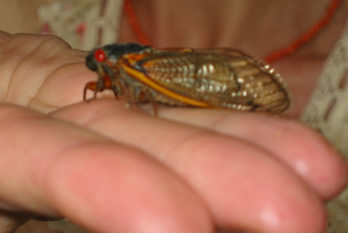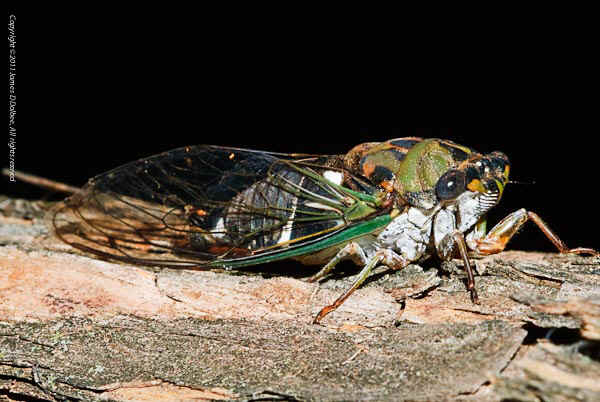
Whose Hungry?
The nymphs, which live underground, feed on the sap of tree
roots. An adult cicada sucks the sap from the tree. Like most
 true bugs the Cicada has a small sucking mouth part, almost beak
like, that it jabs into the tree to extract the sap. It inserts
its mouth into the xylem of the tree. Contrary to
common belief this bug does little if any damage to the trees it
lives on. Most of the damage it causes comes from the females
splitting the bark to deposit its eggs.
true bugs the Cicada has a small sucking mouth part, almost beak
like, that it jabs into the tree to extract the sap. It inserts
its mouth into the xylem of the tree. Contrary to
common belief this bug does little if any damage to the trees it
lives on. Most of the damage it causes comes from the females
splitting the bark to deposit its eggs.
Tree sap is low in nutrients especially the sap found in the root of trees, so how does the cicada and cicada nymphs get the nutrition they need for survival? Well in a study done by John McCutcheon, a molecular biologist at the University of Arizona, he discovered that the Cicada undergoes a symbiotic relationship with two specialized species of bacteria. The bacteria creates nutrients that the Cicada needs, more specifically amino acids it can't get from the tree sap. While in return, the Cicada provides the bacteria shelter and food. More amazingly than that McCutcheon discovered that the symbiotic bacteria, Hodgkinia cicadacola, has the smallest collection of genes ever found in a cellular organism.
This organism has an open circulatory system which is surprising for an organisms that is as active as the Cicada is. It can overcome this open circulatory system by having a tube heart which keeps the haemolymph circulating inside the insects body. The organs are bathed in the haemolymph and that is how it transports its nutrients.